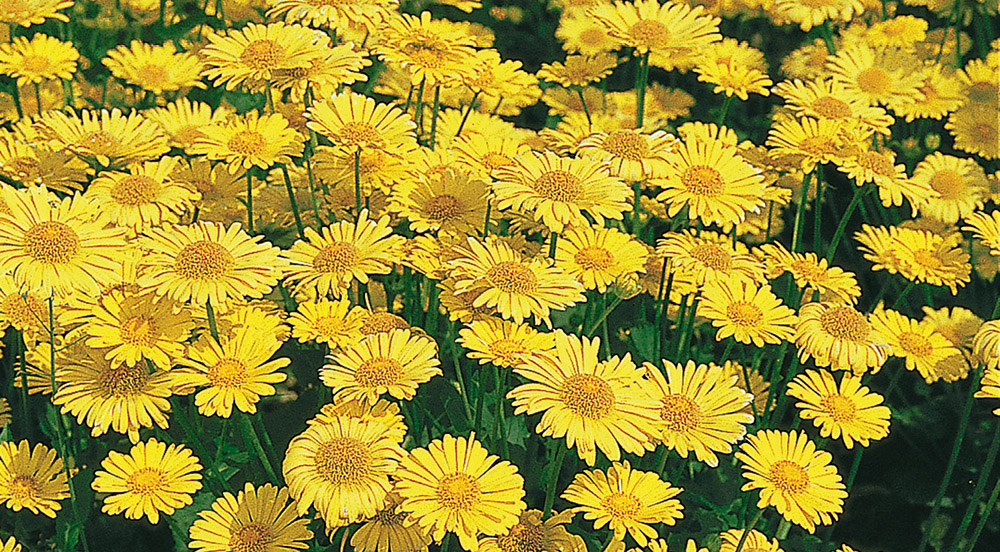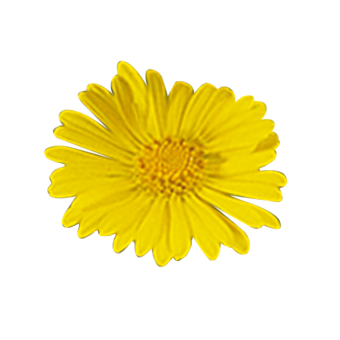

Little Leo
- Compact, bushy habit
- Double row of flower petals
- Intense yellow color
- For early pot production
- Crop Time
- Spring: 24 - 26 weeks
- Height ∅
- 14 ″ / 35 cm
- Exposure
- Sun - Partial shade
- Seed Form
- Raw Seed
- Heat Zone
- 12-5
- Hardiness Zone
- 4a-7b
- Best Uses
- Bedding, Landscape
Culture guide
Usage
Flowering pots, perennial beds
Sow time
7 for flower naturally in 4-5 or force for earlier flowering pot sales.
Sowing method
1-2 seeds per plug
Germination
14-21 days at temperatures of 68-72 °F (20-22 °C).
Stage II (4 weeks) at 70-72 °F (19-21 °C). Stage III & IV (3 weeks) at 65-68 °F (18-19 °C). Feed 100 ppm nitrogen weekly as needed.
Growing on
Transplant plugs after 10 weeks to larger plug or small pot. Once established, vernalize for 8-10 weeks.
Media
Use a well-drained, growing perennial substrate with 0-15 % clay, 0-15 % organic parts (e.g. bark, wood fibres),1-1,5 kg/m³ complete balanced fertilizer, 2-3 kg/m³ slow release fertilizer (3-9 months), iron-chelate, micronutrients, pH: 6.0-6.5. Field: sandy, loamy soils. Standard fertilization: 50-60 g/m² slow release fertilizer.
Temperature
Grow at 10-12 °C or outdoors. In winter indoors frost free at 3-5 °C or outdoors. Outdoor fleece cover needed. Plants kept through the winter start to grow mid December for 6-8 weeks at 5 °C in greenhouse and later the temperature can be slowly to 8-10 °C. This treatment can hinder the stretching of the flower stems is inhibited. After a frost free wintering the plants can be cultivated at temperature of 8-10°C immediately. Warm temperatures of 15-18 °C will decrease the cultivation time (7-8 weeks in total).
Fertilization
Moderate-high fertilization levels are required. Fertilize the crop weekly with 130-150 ppm nitrogen (at 3 kg/m³ slow release fertilizer in substrate), using alternate a calcium nitrate fertilizer and a potassium balanced fertilizer (N: K₂O-ratio: 1:1,5). Avoid high ammonium and high nitrogen levels. Don’t fertilize after mid September. In spring fertilize 130-150 ppm nitrogen of a complete balanced fertilizer. Prevent magnesium deficiency by applying magnesium sulphate (0,05 %) 1-2 times and in case of iron deficiency (above pH 6.0) apply iron-chelate for 1-2 times. The roots are sensitive to high salt levels in substrates. Avoid high fertilizer concentrations, it is advisable to fertilize several times with low concentrations weekly. Field: If necessary according to analysis, improve the soil with 60-80 g/m² of a slow release fertilizer, applied in March and July in several portions. Check the iron level in the soil.
Stage I Starts with the radicle breaking through the testa. The roots are touching the medium. Ends with fully developed cotyledons.
Stage II Starts from fully developed cotyledons. Ends with the fully developed true leaf or true leaf pair.
Stage III Starts from the fully developed true leaf or true leaf pair and ends with 80% of the young plants being marketable.
Stage IV All young plants are ready for sale and in the process of being hardened off. This stage lasts about 7 days.
The cultural recommendations are based on results from trials conducted under Central European conditions. Different conditions in other parts of the world may lead to deviations in results achieved.
